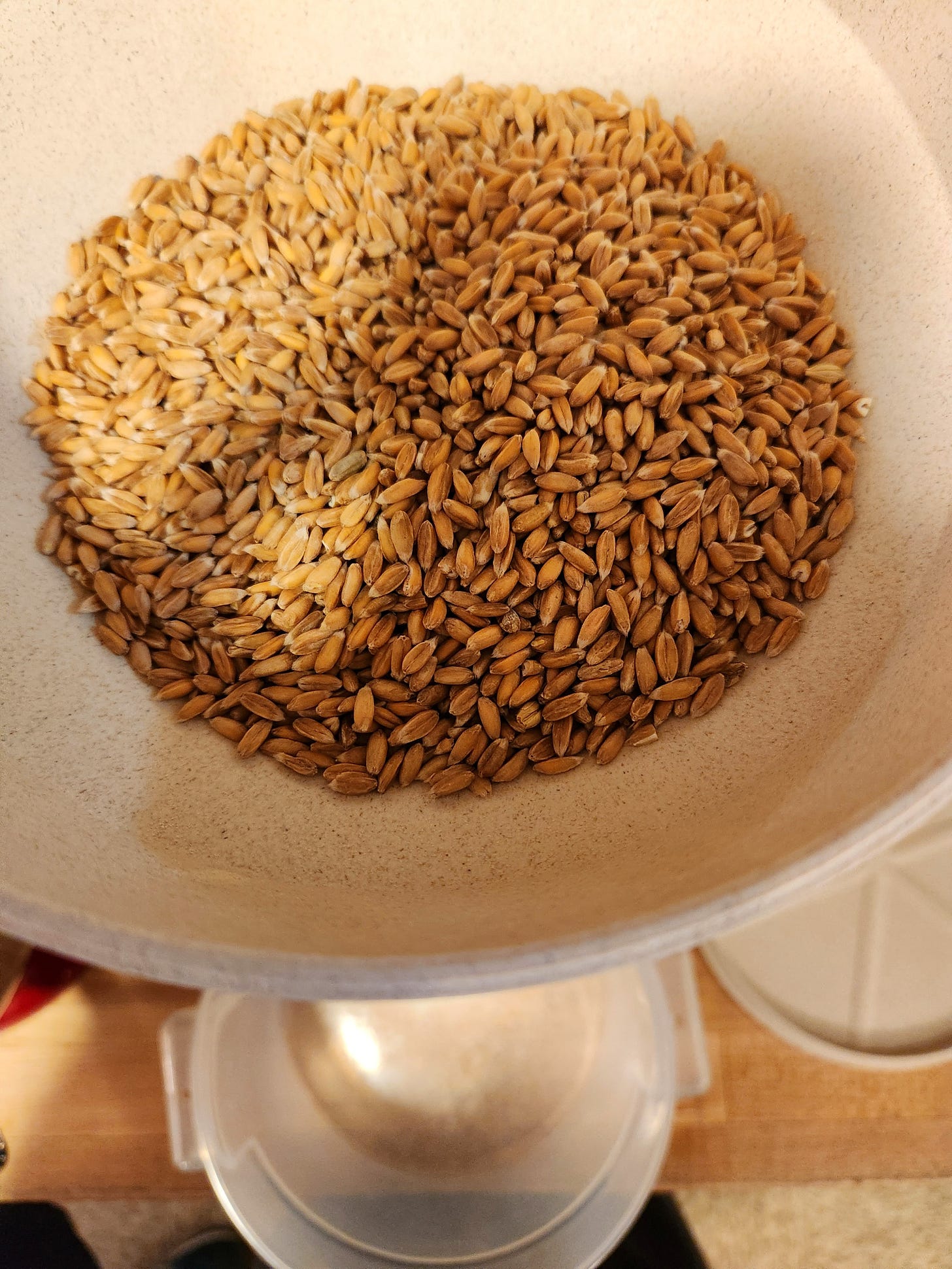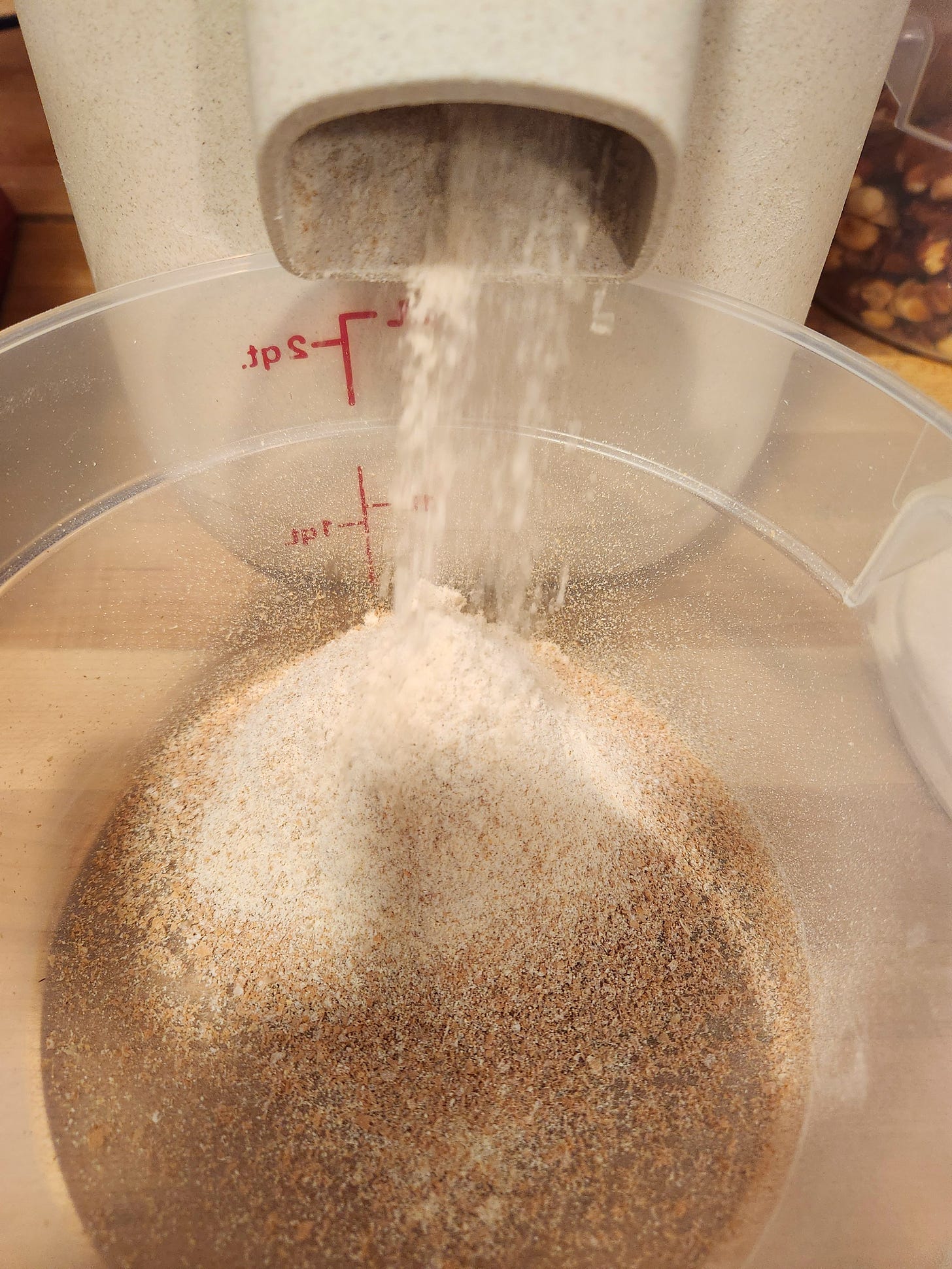An Introduction to Spelt
An Old-School Grain with Timeless Appeal
What is Spelt?
Spelt is a subspecies of wheat that is golden in color and full of nutrition. It is believed to have originated between the Black Sea and Caspian Sea, probably in the area that is modern-day northern Iran, and it spread through Europe over the years. It has been cultivated since the early Neolithic era and has been maintained in its unaltered form these 8,000 years, making it one of the so-called Ancient Grains. Spelt is also known as Farro Grande. It has a nutty and slightly sweet flavor and a high protein content that, depending on growing conditions, is usually between 12% and 15%.
During spelt’s long history, it was often considered to be the food of the poor. But its influence was widespread. There are references to spelt in Dante’s Inferno, Greek Mythology, and even the Bible. Spelt can be used for just about anything that common wheat is used for, from bread and pastries to porridge and beer.
Spelt and the Americas
Spelt was brought to the Americas in the 1890s. It was originally a widely produced crop, but it was quickly replaced by common wheats grown to be milled into bread flour. However, spelt is becoming popular again, thanks to consumer demand for organically grown Ancient Grains. In the U.S., Ohio is currently the leading grower of spelt, and it is also cultivated in some areas of Canada.
The Environmental Benefits of Growing Spelt
Because spelt requires less fertilizer than some of the more popular types of wheat, it is easy to grow organically. Spelt is also popular among Ancient Grain fans who oppose the genetic modification of wheat crops. Spelt likes a lot of sunlight and well-draining soil.
Spelt is adaptable to a very wide range of temperatures. It can grow between 86 degrees and -10 degrees Fahrenheit. This allows it to be grown as a winter crop or a spring crop, giving farmers flexibility. It’s a great addition to a crop rotation plan, especially when alternated with legumes.
Why Spelt is a Great Thing to Eat
Spelt provides protein, fiber, B vitamins, and numerous minerals. As it is a type of wheat, spelt’s protein content is in the form of gluten, making it unsuitable for those with Celiac disease. However, it may be suitable for some people who are sensitive to gluten from common wheat varieties. One reason for this is that spelt’s gluten content is more water soluble, making it easier to digest.
Spelt is also a great thing to eat because of its long history! How cool is it to get to enjoy a grain that’s been essentially unchanged for thousands of years? This is what many of our ancestors ate, and we can eat it too.
Baking With Spelt
Spelt has a high gluten content, but remember that gluten is more complicated than it seems. Bread made exclusively with spelt flour generally doesn’t hold its shape as well as you might expect. When baking bread with spelt flour, either use a combination of spelt and common wheat flours, or bake your bread in a bread pan to help give it structure. Be sure to bake your loaf fully to avoid a gummy interior.
Spelt, especially full-inclusion spelt, is well-suited to pastry baking because it has a low-risk for gluten overdevelopment. Because spelt is so similar to common wheat, it is easy to substitute spelt for just about anything you would use wheat flour for. Try it in cookies, brownies, and blondies for an added toothsome complexity, or muffins and pancakes for a bit more nutrition at breakfast-time.
This week, we’re sharing our recipe for Tajin Peanut Brittle Cookies made with full-inclusion spelt flour. This recipe is based off of the Peanut Butter cookies from Joshua McFadden’s excellent book, Grains for Every Season. The nuttiness of the spelt flour lends itself perfectly to these classic peanut butter cookies, and the addition of spicy homemade peanut brittle brings a contrast of flavors and textures. Let’s get baking!



